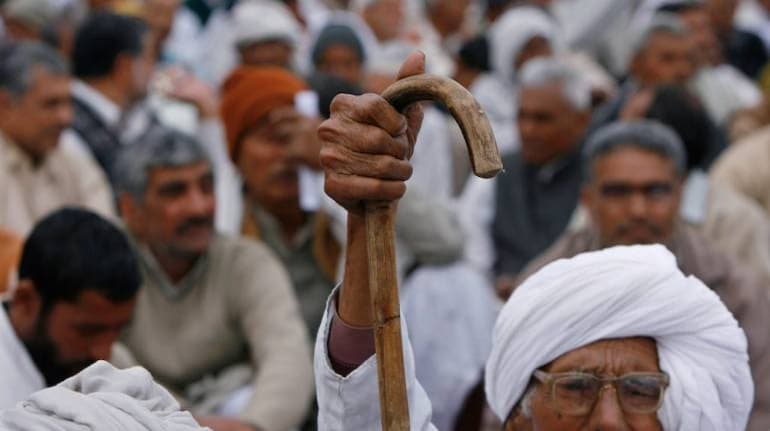



The debate has mostly been about the expansion of the population. But India’s population is steadily greying. The proportion of people aged 60 years and more has been rising while the share of children aged 14 years and under has been declining. Two factors are at work – rising life span and falling birthrate.
Why it matters: Most people over the age of 60 years do not work or have a regular income. Only a tiny proportion of this cohort receive a pension and have medical insurance cover. Without a comprehensive social security cover, most elderly are economically dependent on their children.
At the macro level, this transformation of demography at the national and state levels has implications for nearly all sectors of the economy including labour and financial markets, the demand for goods and services, housing and transportation. It also brings up new opportunities in the economy.
Labour mobility will rise as workers migrate to states with greying populations to make up for a shortfall in workers from within their borders. Geriatric care will emerge as a new area of focus requiring hospitals to bring in more specialists. The demand for healthcare workers trained in geriatric care will rise and so will the demand for assisted living facilities and more products and services designed to make life easier for seniors introduced in the market.
The big picture: People aged 60 years and above constituted just 6% of the population in the 1971 Census. That proportion climbed to 8.6% in the 2011 Census, as lifespan has increased. The proportion of this age group in the population is estimated to rise to 10.1% this year and to 13.1% in 2031, according to the latest edition of Elderly in India published by the ministry of statistics and programme implementation. These projections were based on estimates of the November 2019 report of the Technical Group on Population Projections.
In contrast, the proportion of the population aged up to 14 years, which had peaked at 42% in the 1971 Census, had declined to 30.8% in the 2011 Census. The proportion of this cohort is projected to further decline to 25.5% this year and to 21.7% by 2031.
The number of children born to a woman has been declining due to several reasons – promotion of family planning, improved female literacy and more years of education, nuclearisation of families, delayed marriages and a rise in the number of working women.
Significantly, the transformation of the demography became more accentuated with the ushering in of economic liberalisation. The decadal growth of the general population slowed while that of the seniors accelerated. Life span increased with growth in incomes, better nutrition and improved access to healthcare services.
In the first decade of the current century, the general population grew 17.7%, falling below 20% decadal expansion for the first time in Independent India. The decadal expansion had last fallen below 20% between 1941 and 1951. The growth of the general population is estimated to have slowed to 12.4% between 2011 and 2021 and is projected to further slow to 8.4% between 2021 and 2031.
In comparison, the population of seniors expanded by 35.5% between 2001 and 2011, after a sub-30% expansion in the preceding two decades. Between 2011 and 2021, their numbers are estimated to have climbed 35.8%. The growth of the seniors' population is projected to accelerate to 40.5% between 2021 and 2031.
The number of individuals who are 60 years old and above was estimated at 137.9 million for 2021 and is projected to climb higher to 193.8 million by 2031. It is also seen that the proportion of females in the senior group is rising.
Critical details: The greying of the population was more pronounced in the southern states, more notably Kerala and Tamil Nadu. In the North, Himachal Pradesh stands out. At the other end of the spectrum are states of the northern plains, chiefly Bihar and Uttar Pradesh.
The proportion of seniors in the population of Kerala was 12.6% in 2011 and that was estimated to have climbed to 16.5% in 2021. Projections are that 20.9% of the state’s population will be aged 60 years or above in 2031.
In Himachal Pradesh and Tamil Nadu, over 13% of the population was estimated to be 60 years and above in 2021. The share of elders is projected to rise to 18.2% in Tamil Nadu and 17.1% in Himachal Pradesh by 2031.
It is also projected that more than 15% of the population of Andhra Pradesh, Karnataka, Odisha, Punjab and West Bengal will be aged 60 years and above in 2031.
In contrast, only 7.7% of Bihar’s population and 8.1% of Uttar Pradesh’s are likely to be 60 years and above in 2021. Other states with less than 10% of their population aged 60 years and above include Assam, Chhattisgarh, Jharkhand, Madhya Pradesh and Rajasthan.
Tailpiece: Females outlive males. Of the 137.9 million seniors estimated to be in the population in 2021, 71.1 million are females and 66.8 million males. In 2031, when the population of seniors rise to 193.8 million, 100.9 million would be females. The sex ratio for the 60 years and above cohort has been steadily improving since 1991 when it fell to 930. The sex ratio for 2021 was estimated at 1,065. It is expected to rise to 1.035 by 2031.
Discover the latest Business News, Sensex, and Nifty updates. Obtain Personal Finance insights, tax queries, and expert opinions on Moneycontrol or download the Moneycontrol App to stay updated!
Find the best of Al News in one place, specially curated for you every weekend.
Stay on top of the latest tech trends and biggest startup news.